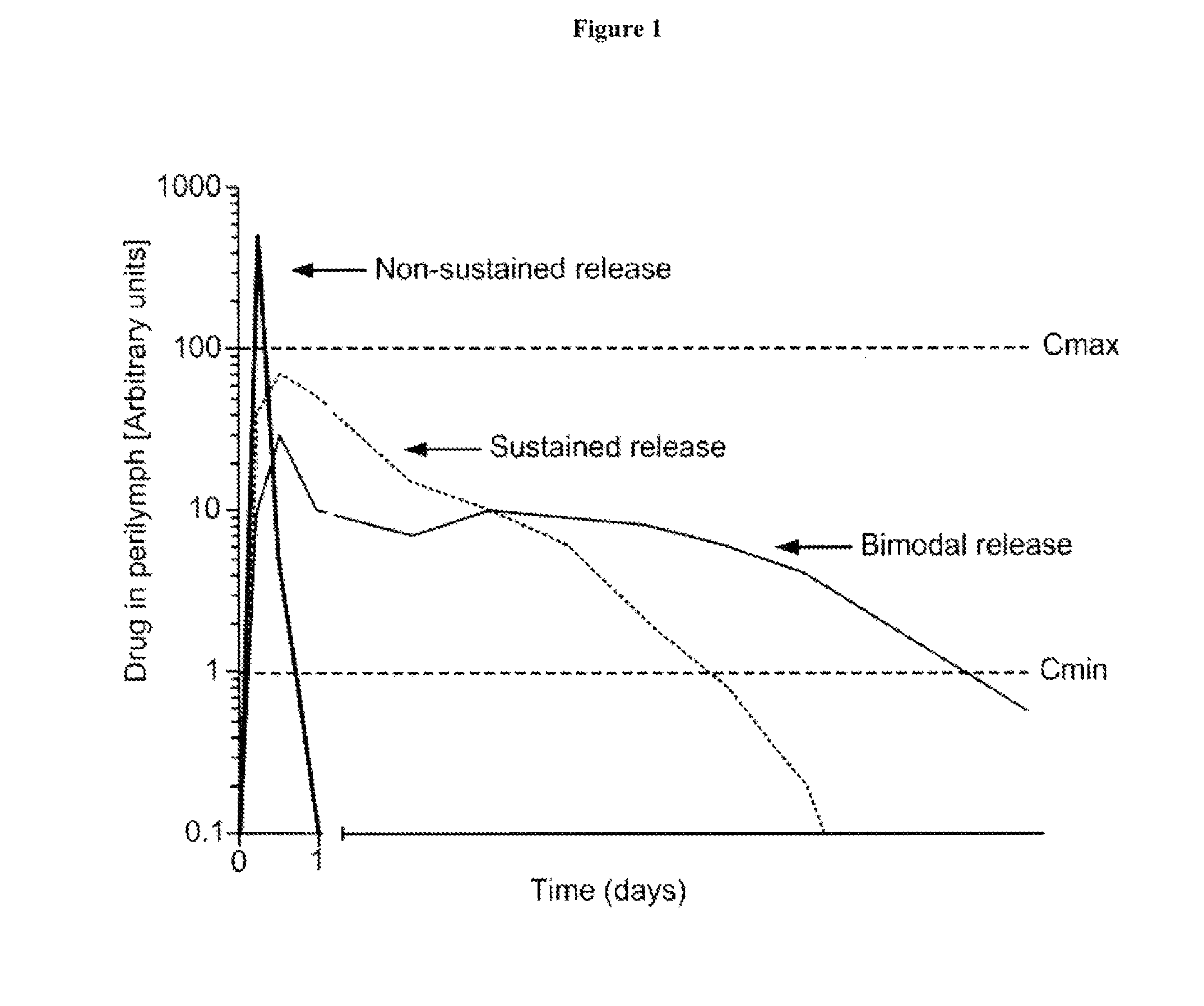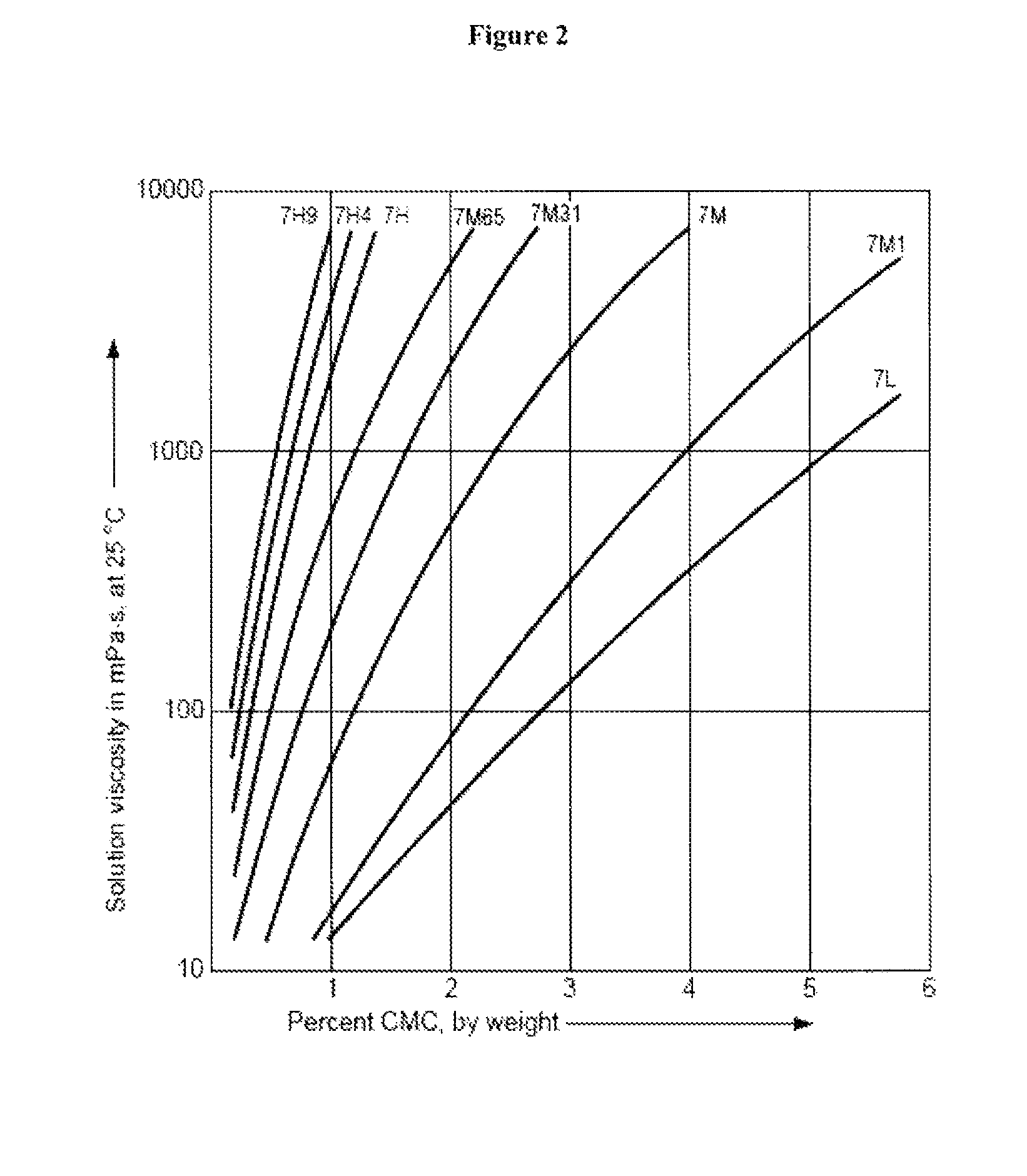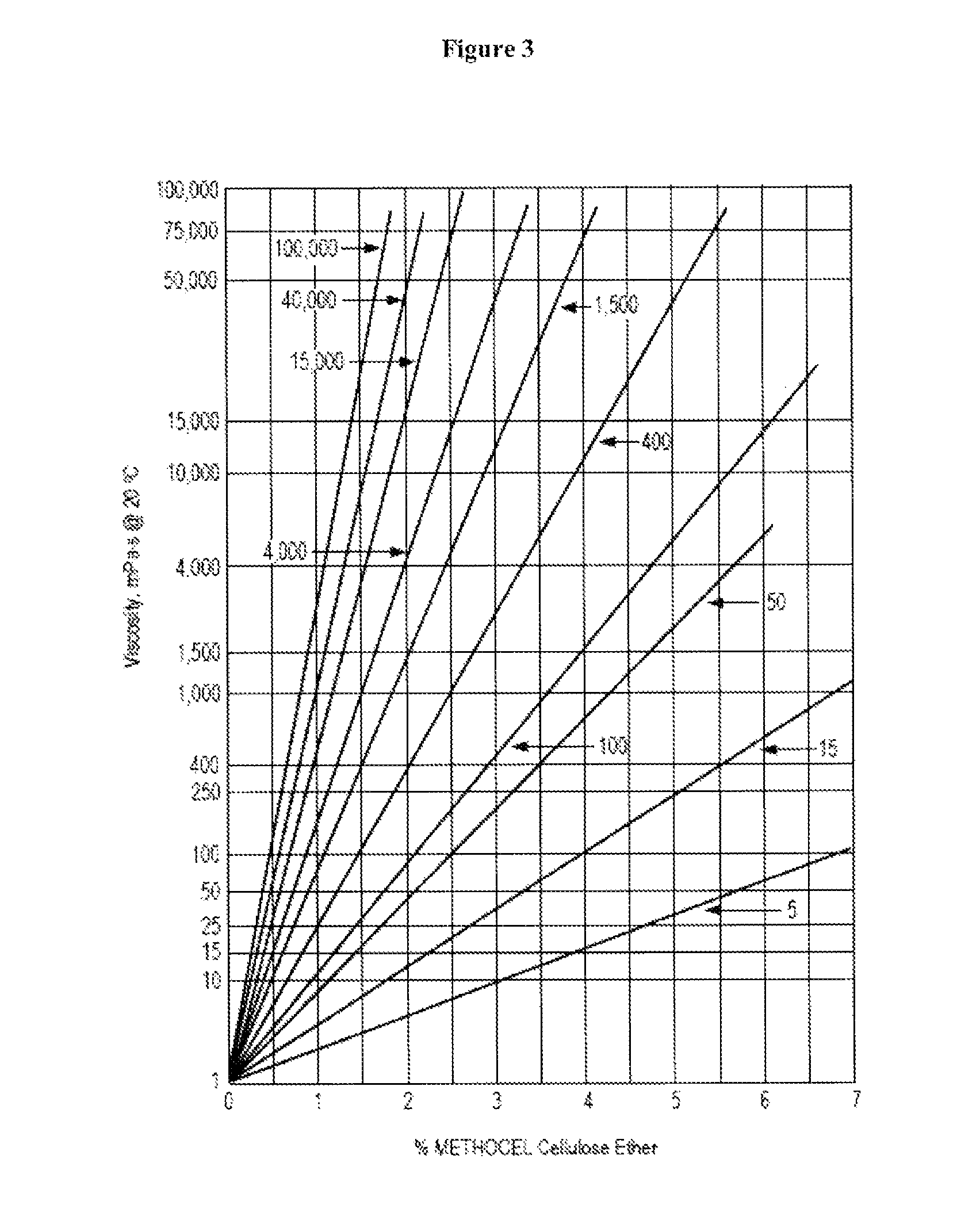Controlled release immunomodulator compositions and methods for the treatment of otic disorders
a technology of immunomodulator composition and composition, which is applied in the direction of drug composition, antibody medical ingredients, peptide/protein ingredients, etc., can solve the problems of ossification of auditory structures, delivery of active agents, hearing loss, etc., and achieve the effect of rapid formulation clearan
- Summary
- Abstract
- Description
- Claims
- Application Information
AI Technical Summary
Benefits of technology
Problems solved by technology
Method used
Image
Examples
example 1
Preparation of a Thermoreversible Gel Anti-TNF Formulation
[0443]
Quantity (mg / g ofIngredientformulation)Adalimumab10.0methylparaben1.0HPMC10.0Poloxamer 407180.0TRIS HCl buffer (0.1 M)789.0
[0444]Adalimumab is supplied in 40 mg / 0.8 ml pre-filled glass syringes containing approximately 4.93 mg sodium chloride, 0.69 mg monobasic sodium phosphate dihydrate, 1.22 mg dibasic sodium phosphate dihydrate, 0.24 mg sodium citrate, 1.04 mg citric acid monohydrate, 0.6 mg mannitol, 0.8 mg polysorbate 80 and water. All mixing vessels may be siliconized or otherwise treated to prevent adalimumab from adhering to the vessel walls.
[0445]A 10-g batch of gel formulation containing 1.0% of adalimumab is prepared by suspending 1.80 g of Poloxamer 407 (BASF Corp.) in 5.00 g of TRIS HCl buffer (0.1 M) and the components are mixed under agitation overnight at 4° C. to ensure complete dissolution. The hydroxypropylmethylcellulose (100.0 mg), methylparaben (10 mg) and additional TRIS HCl buffer (0.1 M) (2.89 g...
example 2
Preparation of a Mucoadhesive, Thermoreversible Gel Calcineurin Inhibitor Formulation
[0446]
Quantity (mg / g ofIngredientformulation)tacrolimus10.0methylparaben1.0HPMC10.0Carbopol 934P2.0Poloxamer 407180.0TRIS HCl buffer (0.1 M)787.0
[0447]A 10-g batch of mucoadhesive, gel formulation containing 1.0% of anti-TNF agent is prepared by suspending 20.0 mg of Carbopol 934P and 1.80 g of Poloxamer 407 (BASF Corp.) in 5.00 g of TRIS HCl buffer (0.1 M) and the components are mixed under agitation overnight at 4° C. to ensure complete dissolution. The hydroxypropylmethylcellulose (100.0 mg), methylparaben (10 mg) and additional TRIS HCl buffer (0.1 M) (2.87 g) are added and further stirring allowed until complete dissolution is observed. Tacrolimus (100 g) is added and mixed while maintaining retain activity. The mixture is maintained below room temperature until use.
example 3
Preparation of a Mucoadhesive-Based TACE Inhibitor Formulation
[0448]
Quantity (mg / g ofIngredientformulation)BMS-56139210.0paraffin oil200trihydroxystearate10cetyl dimethicon copolyol30waterqs ad 1000phosphate buffer pH 7.4qs pH 7.4
[0449]The cream-type formulation is first prepared by gently mixing BMS-561392 with an organic solvent. A second system is prepared by mixing paraffin oil, trihydroxystearate and cetyl dimethicon copolyol with warming to 60° C. Upon cooling to room temperature, the lipid system is mixed with the aqueous phase for 30 minutes.
PUM
| Property | Measurement | Unit |
|---|---|---|
| gelation viscosity | aaaaa | aaaaa |
| gelation viscosity | aaaaa | aaaaa |
| viscosity | aaaaa | aaaaa |
Abstract
Description
Claims
Application Information
 Login to View More
Login to View More - R&D
- Intellectual Property
- Life Sciences
- Materials
- Tech Scout
- Unparalleled Data Quality
- Higher Quality Content
- 60% Fewer Hallucinations
Browse by: Latest US Patents, China's latest patents, Technical Efficacy Thesaurus, Application Domain, Technology Topic, Popular Technical Reports.
© 2025 PatSnap. All rights reserved.Legal|Privacy policy|Modern Slavery Act Transparency Statement|Sitemap|About US| Contact US: help@patsnap.com



